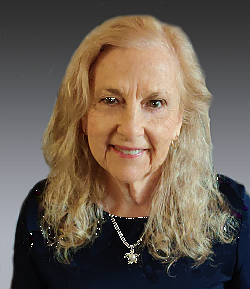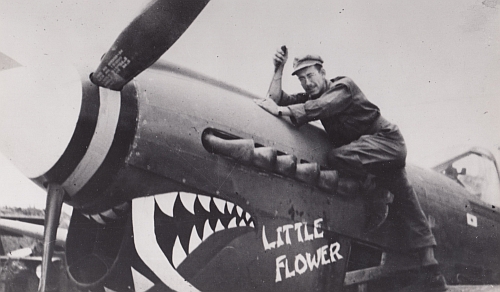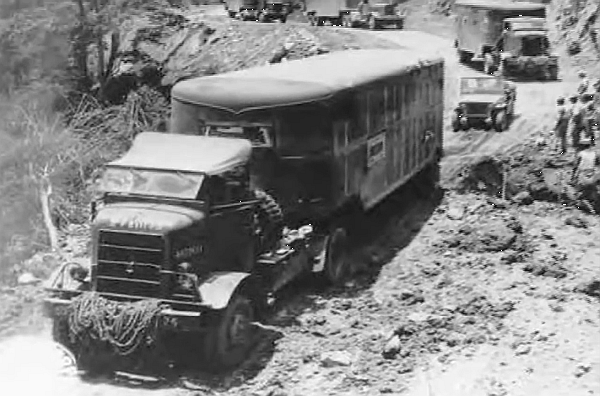Podcast: Play in new window | Download (Duration: 1:31:47 — 42.0MB)
The founder and Executive Director of the Flying Tigers 69th DRS Association discusses the legacy of the men who kept the Flying Tigers in the air during World War II. In the news, GPS jamming and spoofing aircraft positioning systems, 737 MAX 9 lawsuits, Boeing quality actions, sustainable aviation fuel options, FAA and airline pilot retirement age, AV-8B Harrier phase-out, and a positive airline story.
Guest
Charlene Fontaine is the founder and executive director of the Flying Tigers 69th DRS Association, Inc. That organization was founded in 2005 to carry on the legacy of the 350 men who served under Gen. Clare Chenault in World War II. This special squadron was requested by Chiang Kai-Shek and their mission was to drive the Burma Road, fly the Hump, and keep the aircraft flying.
We discuss the history and stories of the Flying Tigers and the 69th Depot Repair Squadron during World War II. Topics include the challenges of flying the hump, the experiences of the men who served, and the importance of preserving and sharing their history. Charlene tells us about the Chennault Aviation and Military Museum and her work on trauma and mental health. She also gives us a little taste of the film she is working on.
In addition to awarding youth scholarships, the Association seeks to educate others on the history of China, Burma, India (CBI) and continue to build relationships with the people of CBI. The 69th DRS Association works with other WWII organizations to help veterans and their families navigate the challenges of age, injury, and illness.
Charlene is an international consultant, speaker, author, root cause expert, wellness advocate, and researcher. Her main interest is how stress, trauma, and loss affect our daily lives. Her focus is on history and communication: how it shapes us, helps make life better and what can be gained. She works with industry, the military, law enforcement, veterans, and youth. The 69th engagements find her at air shows, conferences, schools, and reunions to inspire youth to learn history and honor our elders and all those who serve our country.
Aviation News
GPS interference now a major flight safety concern for airline industry
EASA partners with IATA to counter aviation safety threat from GNSS spoofing and jamming
The European Union Aviation Safety Agency (EASA) says GPS jamming and spoofing incidents have increased in Eastern Europe and the Middle East. EASA recently held a joint workshop with the International Air Transport Association (IATA) with the “high-level conclusion… that interference with satellite-based services that provide information on the precise position of an aircraft can pose significant challenges to aviation safety.” Mitigating these risks requires short-, medium- and long-term measures:
- Short-term, pilots and crews need to identify the risks and know how to react and land safely.
- Medium-term the certification requirements of the navigation and landing systems need to change.
- Long-term the agency needs to be involved in the design of future satellite navigation systems.
The workshop attendees agreed to several measures:
- Reporting and sharing of GNSS interference event data. In Europe, this would occur through the European Occurrence Reporting scheme and EASA’s Data4Safety programme.
- Guidance from aircraft manufacturers to ensure that aircraft operators are well-equipped to manage jamming and spoofing situations.
- Alerting: EASA will inform airlines, air navigation service providers, manufacturers, and airports about attacks.
- As a backup, aviation must retain a Minimum Operational Network (MON) of traditional navigation aids to ensure there is a conventional backup for GNSS navigation.
Boeing shareholders sue after midair 737 Max 9 blowout
Shareholders filed a class action lawsuit alleging that Boeing misled them about potential “serious safety lapses.” The suit was filed for those who purchased Boeing common stock between Oct. 23, 2019, and Jan. 24, 2024. On that date, Boeing and its executives claimed they were “making steady progress” on their “top priority … the safe return to service of the 737 MAX” following two deadly crashes in late 2018.
The suit claims “Unbeknownst to investors, statements such as those… were false and misleading because Boeing failed to disclose that it had been prioritizing its profits over safety, which led to poor quality control standards in the production of its commercial aircrafts such as the 737 MAX…”
Other related suits:
- Six passengers filed a class-action suit claiming physical and emotional distress.
- Four passengers are seeking damages from Boeing and Alaska Airlines for experiencing “havoc, fear, trauma [and] severe and extreme distress.”
Feb 4, 2024: Boeing to dedicate more days in 737 factory to address quality issues and ideas
In a message to employees, Boeing Commercial Airplanes President and CEO Stan Deal said the 737 program will spend several days in the Renton factory to focus on quality, including inspecting some undelivered airplanes for potential nonconformances before delivery.
Fat, sugar, trash: All the weird things that may fuel planes by 2050
Right for Whom? Airlines Shift SAF Goals to Easier – And Far Less Effective Targets
Aviation has a net-zero carbon goal by 2050 with sustainable aviation fuel, or SAF, being a key driver. The Washington Post says that in 2023, production of SAF in the United States was less than 0.2 percent of the airline industry’s jet fuel consumption. The goal is 100% by 2050. SAF can be produced from fat (cooking oil, vegetable oil, animal fat, Ethanol from corn now and other feedstocks in the future, waste (residue and “cellulosic cover crops” grown in the off-season), and hydrogen.
As the Marine Corps Says Goodbye to Decades-Old Jet, Its Maintainers Hit the Fleet for the Last Time
The F-35B Lightning II STOVL jet is the future for the Marines, replacing the AV-8B Harrier II which has been in service since the 1980s. The Harrier will be phased out over the next two years.
FAA warns US Congress against hiking airline pilot retirement age
In a letter to Congress, the FAA Administrator said the mandatory retirement age of airline pilots should not rise to 67 from 65 without first conducting additional research.
Hosts this Episode
Max Flight, Rob Mark, Max Trescott, David Vanderhoof, and our Main(e) Man Micah.
- SEO Powered Content & PR Distribution. Get Amplified Today.
- PlatoData.Network Vertical Generative Ai. Empower Yourself. Access Here.
- PlatoAiStream. Web3 Intelligence. Knowledge Amplified. Access Here.
- PlatoESG. Carbon, CleanTech, Energy, Environment, Solar, Waste Management. Access Here.
- PlatoHealth. Biotech and Clinical Trials Intelligence. Access Here.
- Source: https://www.airplanegeeks.com/2024/02/07/786-flying-tigers/








